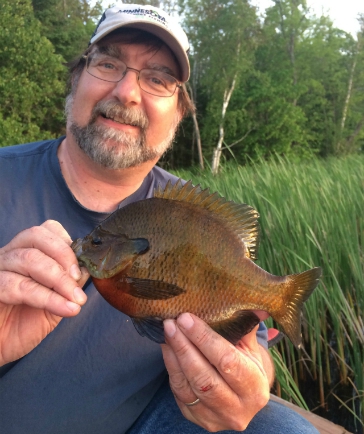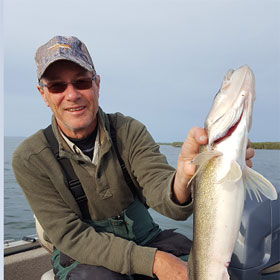Try a slip bobber for summer sunfish
By C.B. Bylander
May 07, 2019
A good way to catch these fish is to use a slip bobber, which makes casting easy even when you want to fish in 10 feet of water or more.
Have you ever tried a slip bobber for catching sunfish in summer?
If not you should.
A slip bobber rig is the perfect setup for catching bluegill and other sunfish in late spring and summer, times of year when many larger sunfish move away from shallow near-shore locations to deeper weedlines, underwater humps and other structure.
What is a Slip Bobber?
A slip bobber is simply a bobber that is formed around a hollow tube that runs from top to bottom. This type of bobber, when combined with a sliding bobber stop knot and plastic bead, allows you to fish deep water while also making long casts. That’s because unlike standard bobbers, which you affix to a certain depth on your line, a slip bobber moves freely up and down the line until it hits a “bobber stop.” As such, you can reel-in your bobber almost to the tip of your rod even though you are fishing 10, 15 or 20 feet deep.


The video that accompanies this blog shows how to tie a slip bobber rig. It’s easy. You can find slip bobbers, knots and beads at bait shops and other fishing outlets. Frequently, slip bobbers are sold in a single package that contains two, three or five bobbers. Like ordinary bobbers, slip bobbers come in a variety of sizes, shapes and materials. Some are foam. Some wood. Some are even weighted, thereby allowing you to make even longer casts because the bobber has so much mass.
You can even buy lighted slip bobbers for fishing deeper water after dark. In Minnesota, slip bobbers are commonly used for catching walleye too. Savvy anglers pinpoint walleye holding locations, slip an anchor overboard and then set their slip bobber “bobber stop” to a depth that will suspend their bait about one foot above the bottom. After that you simply wait for the bobber to sink and set the hook.
Though rigging a slip bobber is simple there is one thing to know. When you slide the bobber stop knot onto your line you should tighten the knot with medium pressure. If you pull to hard the sliding knot won’t slide up and down the line easily. Similarly, if you don’t tighten the knot hard enough the knot will wander up and down the line, and your bobber depth will constantly change. So, tighten the knot with medium tension (not too loose; not too tight).
Check our interactive map to find places where to fish and boat in Minnesota. You can get your MN Fishing License here.









